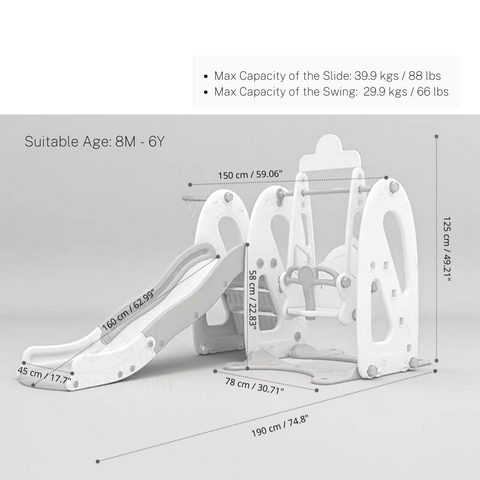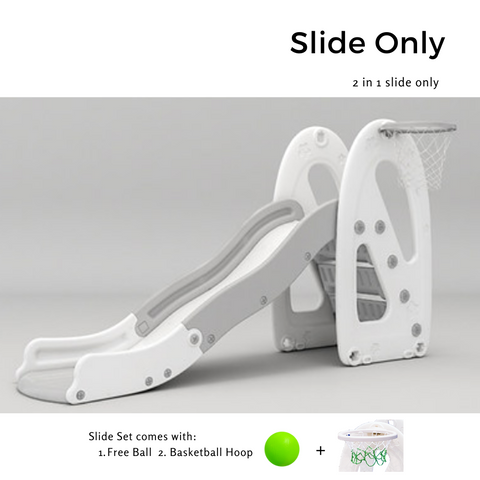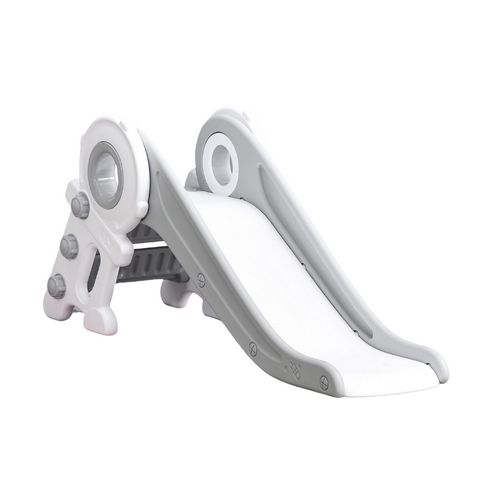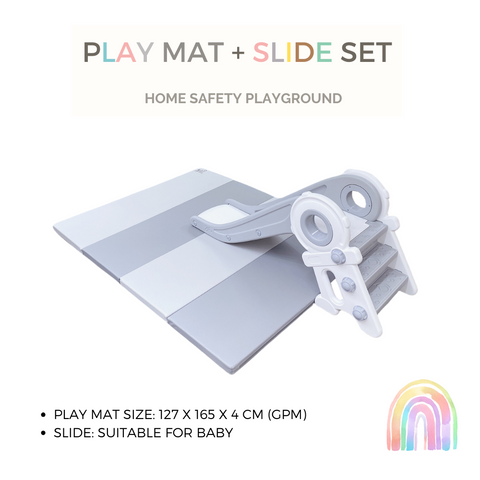Kids Swing and Slide
Physical Development: Swing, Slide, & Climb!
By Dr. Eric Strickland
Self-Directed Play
The wonderful thing about vigorous play on climbers is that you just "let it happen." Free play on a climber in a well-designed play area naturally inspires children to be active. Rather than standing in line waiting a turn, children can use their bodies in self-directed play.
Climbing gives children opportunities to develop a variety of skills and to exercise various systems of their bodies: Reaching for rungs above the shoulder raises the arms, thereby increasing the cardiovascular flow.
- Stretching increases and maintains flexibility.
- Pulling up with hands and arms while climbing a ladder or a climbing wall builds upper body, grip, and arm strength.
- Climbing steps and ladders develops leg strength and coordination.
Coordinating Movements
Swinging allows children to develop coordinated movements. They practice those movements as they propel themselves on the swings. We have all watched as young children struggle with the difficult task of coordinating all the different motions needed to make a swing move. No amount of verbal explanation "teaches" children how to swing. It is the repetitive process of "feeling what works" that gets children swinging. If you want to try to help a child learn to swing, you can stand in front of the swing after the child is in motion and encourage him to touch your hand with his feet. As he stretches out to touch your hand, he begins to experience the sensation of the "pump" part of the swing motion.
Building Balance
Sliding contributes to vestibular stimulation, which simply means that it stimulates the ear canal and the fluids in it. This stimulation helps develop a sense of balance. Through sliding, children learn to keep their torsos balanced as gravity pulls them down the slide. Time is a critical element in supporting play that is designed to help children develop physically. At the very least, children need 30 minutes of active play twice a day. As a professional dedicated to the well-being of children, you can take them outdoors, step back as they explore the equipment, and observe their physical growth and development!
For orders less than $80 placed Monday to Friday are dispatched next business day.
All free delivery orders will receive within 2 - 7 business days (no delivery on weekends and public holidays)
A baby product company dedicated to providing parents with high-quality, innovative, and practical products that make life easier and more enjoyable.




